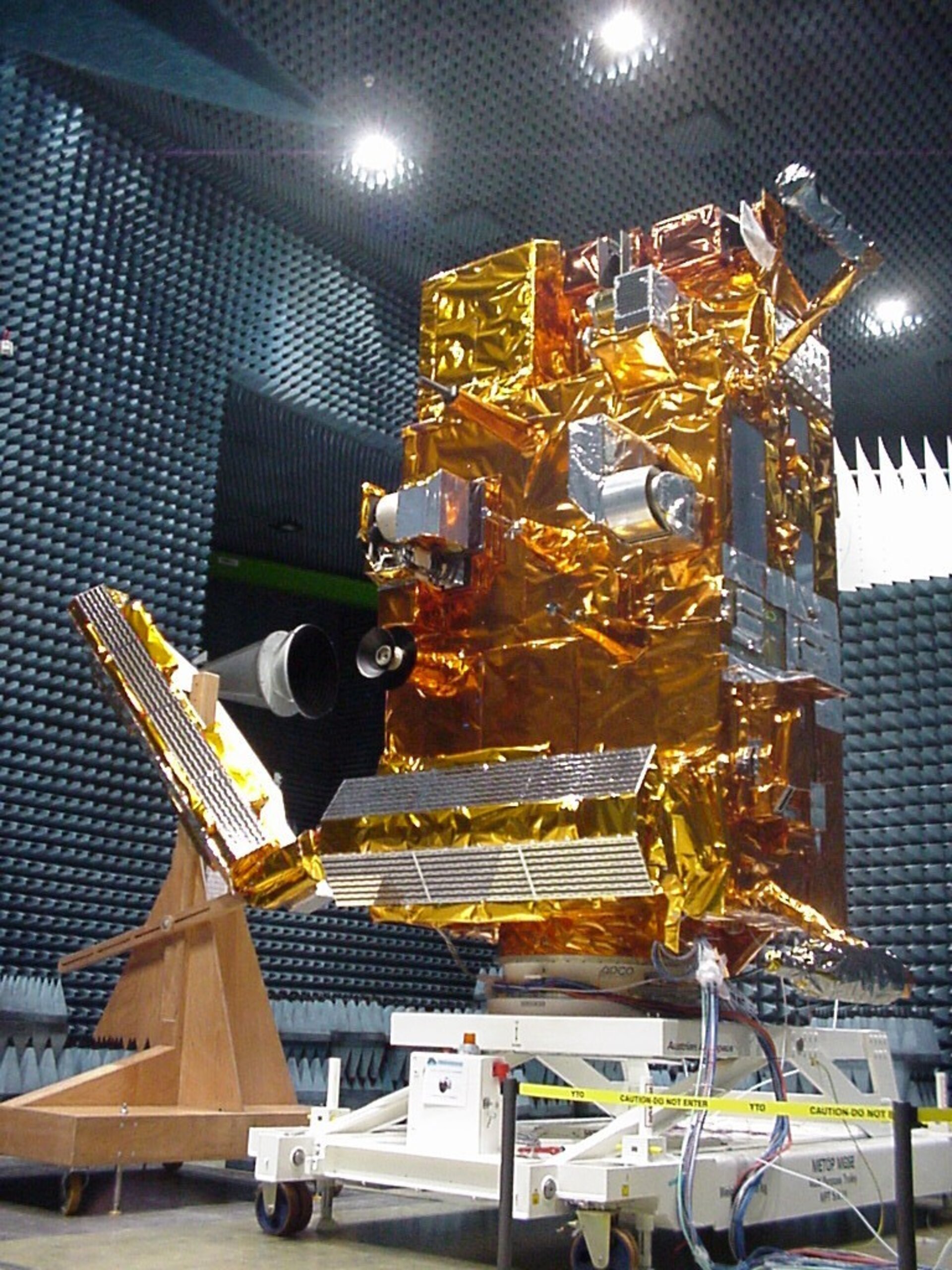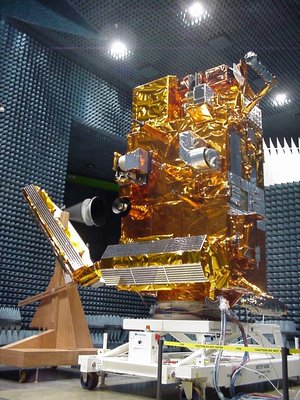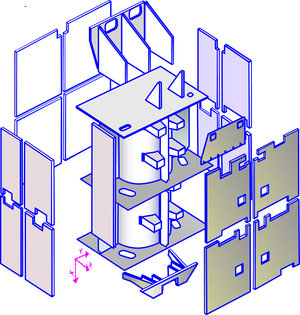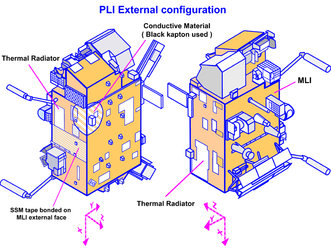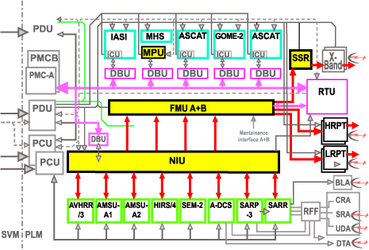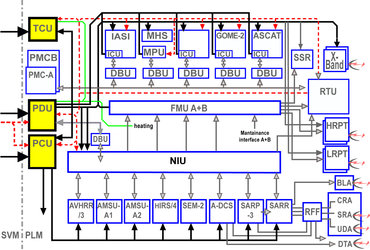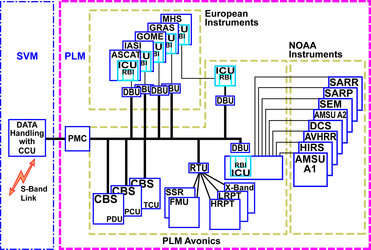Payload Module
The Payload Module (PLM) provides the main supporting structure for both the payload instruments and the payload support systems. Instrument sensors and antennae are mounted on the external panels, while most of the electronic units are accommodated inside the PLM.
The accommodation of the large suite of instruments is a significant design driver for the overall PLM configuration. The PLM also houses all of the avionics necessary for power regulation and distribution, command and control, and the handling of scientific data.
The Payload Module (PLM) is the main supporting structure for the complement of instruments and various deployable features. The internal design of the PLM allows these instruments to work optimally.
The integrated PLM provides:
Structural support
The PLM has a 'box' shape structure with a central cylinder as the main structural load path to the Service Module (SVM). It houses the payload instruments and the payload support systems. Instrument sensors and antennae are mounted on the external panels, while most of the electronics units are accommodated inside the PLM.
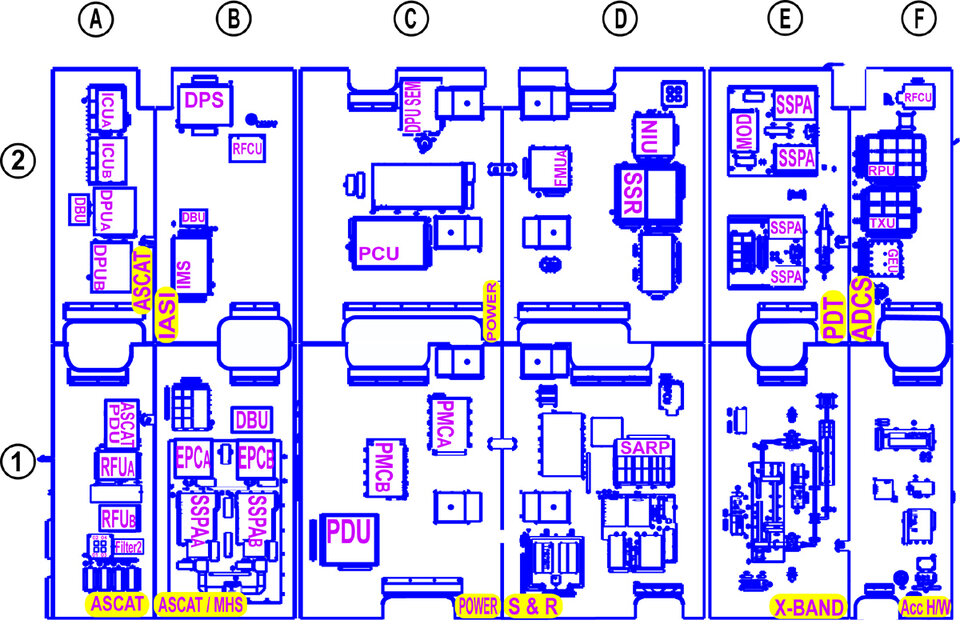
Thermal control
Thermal control maintains all the electronics and instruments in predefined operational and non-operational temperature limits.
Measurement data acquisition, handling, and storage
Scientific data acquisition, formatting, encryption and storage. A dedicated unit is implemented to adapt the NOAA interfaces to European standards for the American instruments.
Electrical power
Each unit or instrument is powered through a switchable and protected line, provided by specific PLM units. Unregulated power is distributed to the European instruments while a dedicated unit provides the American instruments with regulated 28 V power.
Command and control for the PLM elements
A dedicated data bus, based on the European On-Board Data Handling Standard (OBDH), is used by the PLM. The Payload Module Computer (PMC) receives commands from the SVM and interfaces with the European instruments Instrument Control Units (ICUs) and Microwave Humidity Sounder Protocol Conversion Unit (MPU), as well as with a specific PLM unit for the American instruments (NIU).
Measurement data transmission to ground
Involves the transmission to ground of Consultative Committee for Space Data Systems (CCSDS) packetised data through the High Resolution Picture Transmission (HRPT), Low Resolution Picture Transmission (LRPT) and X-band links.
PLM design considerations
The PLM external configuration is mainly driven by the fields of view and performances of instruments, sensors, radiators and antennas, as well as the available volume under launcher fairings.
The internal configuration has been driven by the following principles:
- provision of sufficient radiator area for heat dissipation of internal units (passive thermal control)
- modular grouping of PLM subsystems or functional units and instrument units to allow for pre-integration and testing on single panels
- minimal failure propagation to other instruments/subsystems in case of unsuccessful antenna deployment (e.g. only Advanced Scatterometer (ASCAT) units accommodated on the panels 'shadowed' by the stowed ASCAT antennas)
- optimal length for loss-sensitive cabling like antenna-receiver connections
- optimal harness routing in conjunction with modular assembly flexibility

Deployable elements
The PLM accommodates various deployable elements:
- the solar array, which is fixed to the PLM zenith side only during launch. Its deployment is controlled solely by the SVM
- the GPS-based Atmospheric Sounder (GRAS) GAVA antenna is deployed by a spring mechanism which is released fully under SVM control
- the fore and aft ASCAT antenna assemblies, which are released by pyros from the SVM and further deployed under motor control from the PLM
- the Low Resolution Picture Transmission (LRPT) and Combined Receive Antenna (uplink) (CRA), similar to the ASCAT antennas, are both released by the SVM and subsequently further deployed under motor control from the PLM
Payload Module instrument summary
A short description of all the instruments on the Payload Module is given in the instrument summary, see link top right.


